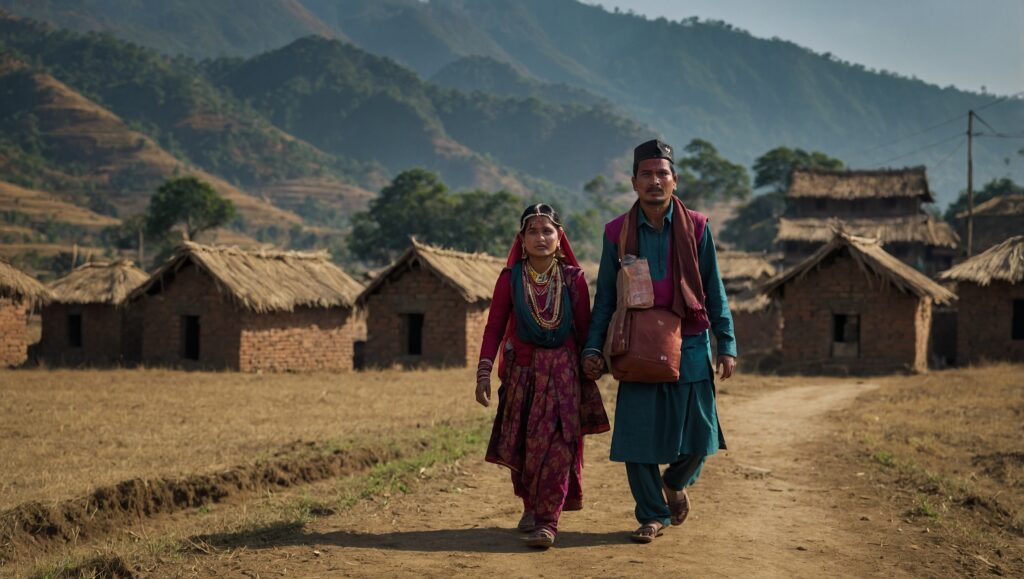In the efforts to eliminate child marriage, which still remains a concern in the country, Nepal has baked the following strategies for children’s rights and education for children. This concerted effort has come in the wake of entreaty from survivors of child marriage and advocacy for children’s rights on the need to address the paramount social evil of child marriage. In fact, through cooperation with NGOs and international societies, the government is trying to solve the problem of child marriages and the consequences that come with it with a multi-dimensional tool.
Leading this campaign is Anita, and she is a child marriage survivor who has managed to stand up for the campaign. Her recent campaign for a complete ban on child marriage has recently gone viral in Nepal and has again highlighted this crucial subject. The girl’s narrative of Anita, as with other girls, shows the drastic social, economic, and health consequences of child marriage, including loss of education, unprotected sex, and limited and poor quality of life.
The measures taken by the government region include the enhancement of Laws as well as enforcement mechanisms against child marriage. New legislation that is currently being Brought to the table would seek to enhance the punishment of those people who organize or conduct child marriages. Also, there is a campaign on the government to review the age of maturity to 20 years for both sexes to the standard world practice and the recommendations of international non-governmental organizations on children’s rights.
Education is central in the college more-child marriages war. The Ministry of Education has organized programs ensuring girls remain in school because education is known to be one of the best ways of delaying marriage. Such measures include Girl child scholarship support to students from vulnerable backgrounds, provision of better and more hygiene insecure school environments, information sharing exercises on the need for girl child education, and dangers of early marriage.
This brings us to the next topic of the new strategy – community engagement. Knowing the fact that child marriage is part of culture and tradition, the government is in the process of engaging the leaders, clergy, and other organizations in the society in the change of heart. Seminars and awareness-creating crusades are also being targeted to the rural regions where child marriage is prevalent and legal consequences of early marriage, as well as its adverse health effects, are explained to the families.
This research also established that economic factors were recurrent when it comes to child marriages, as poverty forces families to sell their daughters for marriage. To provide for this, the government is growing social protection programs and implementing new skills development programs for teenage girls. These programs are designed to try and offer what otherwise might be socially constructed pathways of transformation for young women, enabling them to achieve economic capital so that they can be economically independent and not forced into early marriages.
Now, efforts are being made to fortify the health services to adolescent girls and young women. This consists of services such as education in matters concerning reproduction plus counseling to persons with the likelihood of or likely to be involved in child marriage. Health workers are being enjoined to look out and hopefully take under their fold other young girls who may be at risk of being pulled into child marriage.
Efforts to use technology in the fight against child marriage are also under consideration. New strategies, including the use of technology in the form of smart applications for reporting cases of child marriages and incorporating the use of technology in educating people and creating awareness, are being made. All these technological solutions are designed to attract youths and provide them with support services and information.
International cooperation is also preventing Nepal’s initiatives. Local and international non-governmental organizations such as UNICEF and Girls Not Brides are assisting the government by offering technical knowledge and assistance in such endeavors. These partnerships are significant in an effort to ensure that research findings are implemented in the Nepali context and that the solutions reached are long-lasting for the problem of child marriage in Nepal.
Monitoring and evaluation measures are progressively being developed and enhanced to enhance the rate of assessment of such interventions and their effectiveness. The government is in the process of creating a specific team or group of staff whose central role will be to coordinate the efforts of implementation of the prevention programs on child marriages, as well as to track the data implemented as to its success rates. Overall, this sort of logging will enable constant evaluation and modification of initiatives as the results occur.
The media is going to be used as a chief collaborator in this campaign. Campaigns are underway to ensure more airtime for child marriage topics on both mainstream and new media. Positive examples of the girls who did not experience the fate of child brides and study are provided in order to encourage people and change the culture.
I predict that as efforts to lower child marriage rates in Nepal increase, there is optimism among activists and policymakers. Gratefully, the approach is nonetheless striking in its scope, although recolonizing such deeply entrenched cultural patterns will take some time. The coming years will only decide whether these initiatives will work out successfully and how many thousands of young girls in Nepal they are going to affect.
Abandoning child marriage in Nepal is not only a legal or policy question but a question of social justice. Not only does Nepal protect children from exploitation and abuse, but it is also building the nation’s future by tackling child marriage drivers and strengthening girls and communities. As these initiatives go on, they bring among them the pure and innocent dreams of young girls like Anita. The future would shaped to ensure every child would have the right to decide their future without being forced into early marriage.


